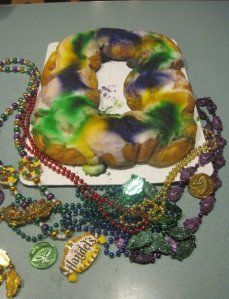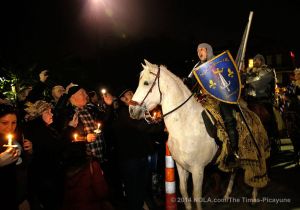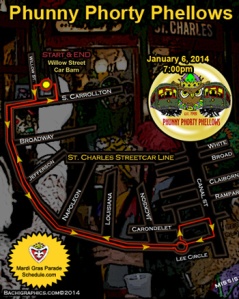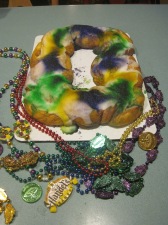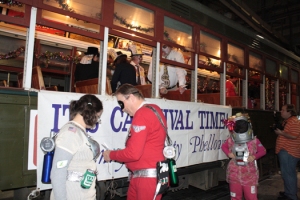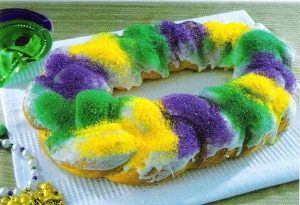
King Cake, Super Bowl Party, 2010
For most Americans, the Christmas tree was banished to the curb over a week ago; and in many stores, Valentines and boxes of chocolates have replaced tinsel and candy canes. Nevertheless, in much of Christendom, today, January 6th, marks the end of festivities. And to think of it, the symbolism of the Epiphany – the presentation of the newborn baby to the Magi – has more gift-giving relevance than a bunch of sheep surrounding a manger. Regardless, for most of us, the holiday season has quietly come to a close.
Except, that is, in places like New Orleans. For them, January 6th marks the close of the Christmas season, but simultaneously the beginning of the Carnival season. From the first “King Cake” on the Twelfth Night (see “An Epiphany”), Carnival builds from parties and balls into the crescendo of beads, floats, and beer that is Mardi Gras. And this year, with Mardi Gras falling on March 8th, the pre-Lenten celebration is longer than usual.
This is not to say that the next two months will be filled with drunkenness and debauchery. Just as people who remain on Bourbon Street are under the mistaken impression that they have experienced New Orleans, Carnival is much more textured, traditional, and family-oriented than the national media or “Girls Gone Wild” videos suggest.

Beads along St. Charles Ave., March 2008
Sure, folks in southern Louisiana seldom run from good fun, but the lion’s share of the balls, cotillions, parties, and other activities take place in neighborhoods and suburbs not called the French Quarter. Most parades pass along broad avenues where families set out lawn chairs and barbeques on the grassy medians (called “neutral ground”) so that they can make a day of it. Tourists generally miss the formal balls, the Mardi Gras Indians, and earlier parades, and likewise, miss the point.
The Carnival celebration is the product of the city’s traditions — religious, social, and ethnic. And if you know the people, you also know that such traditions are guarded with a certain ferocity. To suggest to them that drunken lunkheads or the baring of breasts is part of Mardi Gras tradition, would be like praising FEMA or inviting BP to a beach party. Public ritual, borne of generations, is tradition; bad behavior is not.
So when you see the national news coverage of the festivities, rest assured that there is a lot more going on than meets the eye.
Leave a Response »
